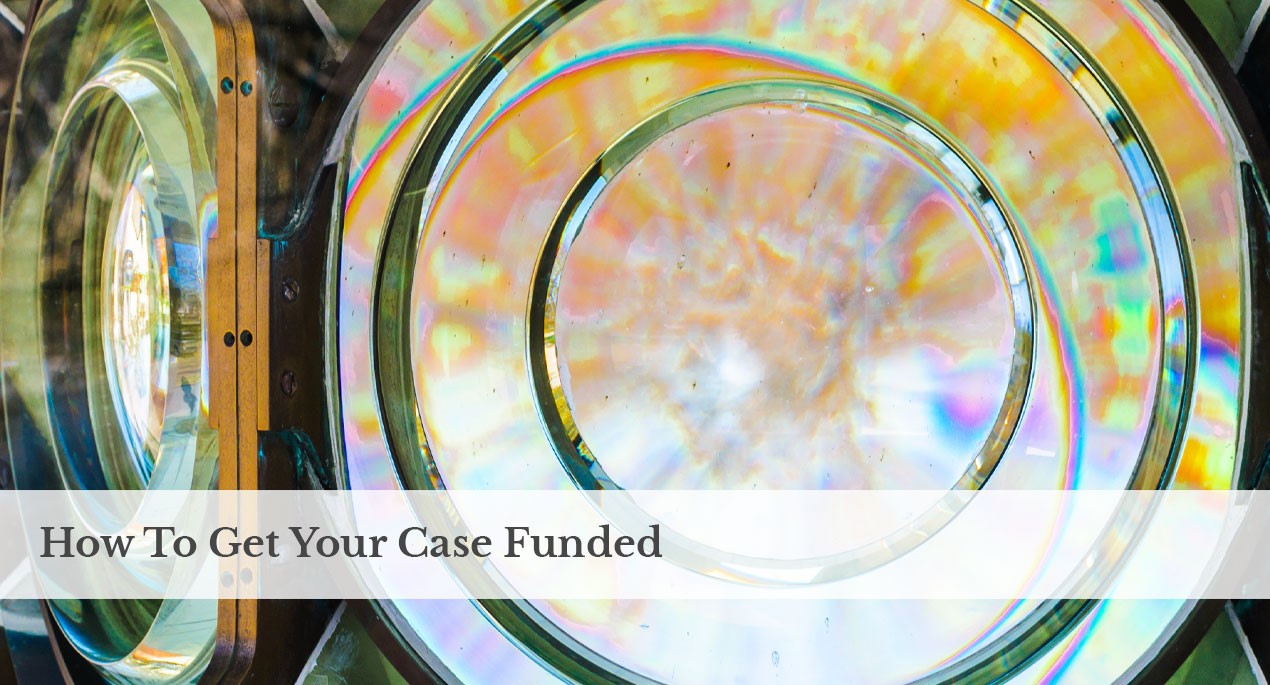January 26, 2021

“What do you need to quickly evaluate my case and reach a funding decision?”
We get this question a lot. This blog post answers it.
If you’d like to present your case to a funder, here’s our checklist of what information we need to begin your case evaluation. At the end, we’ll also give some tips on how to package and present the materials.
What’s in the funding request?
To invest in a case, funders need to understand the case. As a general matter, funders will need roughly the same information that a lawyer needs to decide whether to take a case on contingency. This includes not only the merits—is the law on your side?—but also information regarding the parties, their dispute, damages, collectability, and the funding request.
Here’s a rundown of the basic information every funding request should include:
- Who are the parties and what’s their dispute? Tell us the facts of the case. Describe the plaintiffs, the defendants, and any relevant third parties. We’ll want to understand how the legal dispute came about and the key pieces of evidence that support (or rebut) your story. If it’s a breach of contract action, describe the parties’ history and tell us about what led to the breach. If it’s a trade secrets misappropriation case, tell us why the parties shared their trade secrets and what evidence you have of misappropriation. If it’s a patent matter, tell us the inventor’s story and the evidence of patent infringement.
- What are the main legal issues? Review the principal legal issues in the case. If you have a contract case, send us the contract and explain your theory about why the defendant breached the contract. If your case involves a statutory cause of action—say, antitrust or copyright law—review the statute and explain your theory of liability. You should also review the primary expected defenses in the case and tell us why you think they fail.
- What are the damages and can you collect them? Before we invest in a case, we need to know that the expected range of potential damages will sustain the investment. The best funding requests come with a damages model or analysis, often conducted by an independent third-party expert. We’ll also need to understand whether the defendants are solvent such that any judgment can actually be enforced. If there are collectability issues, you should review your evidence explaining why you think a judgment can ultimately be recovered.
- What is the case strategy? Walk us through what you expect the litigation to look like. In which court will you file? How long will it take to get through discovery and into trial? How long will an appeal take? If there are threshold motions you plan to file, such as a preliminary injunction request, explain that too.
- What’s the funding request? This might seem like the most obvious piece of the puzzle, but you’d be surprised how many funding requests we get that don’t actually make a funding request. Here’s what you’ll want to give a funder.
If you’re looking for fees and costs funding, you’ll need a case budget that separately breaks out the fee budget and the cost budget. The fee budget is what goes to the lawyers: how much in attorneys’ fees will it cost to litigate the case? The cost budget includes everything else, from court filing fees to travel expenses and expert witness costs.
Why do we ask for separate breakdowns of fees and costs? Because we typically look for counsel to share some of the fees with us (we usually ask firms to discount their fees by 50% in exchange for a contingent upside), and we ask the claimholder to pay for a portion of the costs. Separating the fees from the costs helps us both understand the total investment size and also identify how much of an investment the law firm and client will need to make alongside us.
And if you want to monetize your claim or you seek working capital, explain how much you need, and whether you need it all at closing or paid out over time.
Considerations unique to patent cases.
For patent cases, be sure to include the information you have on both validity and infringement. On the validity side, you should include the prosecution history, any prior art searches, and a discussion of why the leading pieces of prior art don’t invalidate your patents. As for infringement, you should include detailed claim charts comparing the principal claims in your patents against the defendants’ infringing uses.
How to package the materials?
The best way to present these materials is in a concise memo that explains the facts, legal issues, defenses, damages, case strategy, and funding request. In addition to the memo, you should also include the key documents that support the case. For example, if it’s a contract action, be sure to attach the contract itself, and any relevant evidence of the breach. If it’s a patent action, attach the claim charts and any prior art search.
If your case is already underway, existing case filings can go a long way towards helping a funder understand the case. For example, if your complaint is already on file, we don’t need a separate memo talking about the facts, though we will still need to understand your case strategy and funding request. And if motions to dismiss and summary judgment have already been filed, you probably don’t need a separate memo discussing the defenses.
Finally, a few tips. First, only share confidential information after you’ve signed an NDA with the funder. Second, update the materials if there’s anything new and relevant to add. Third, you should expect that the funder will want to speak with both the claimholder and counsel before investing in a case.